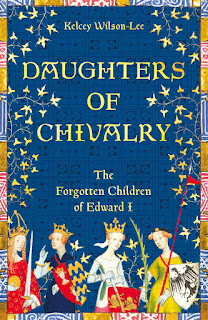It has traditionally been held that Robert Southwell's poetry offers a curious view of Elizabethan England, one that is from the restricted perspective of a priest-hole. This book dismantles that idea by examining the poetry, word by word, discovering layers of new meanings, hidden emblems, and sharp critiques of Elizabeth's courtiers, and even of the ageing queen herself.
Using both the most recent edition of Southwell's poetry and manuscript materials, it addresses both poetry and private writings including letters and diary material to give dramatic context to the radicalisation of a generation of Southwell's countrymen and women, showing how the young Jesuit harnessed both drama and literature to give new poetic poignancy to their experience.
Bringing a rigorously forensic approach to Southwell's 'lighter' pieces, Sweeney can now show to what extent Southwell engaged exclusively through them in direct artistic debate with Spenser, Sidney, and Shakespeare, placing the poetry firmly in the English landscape familiar to Southwell's generation. Those interested in early modern and Elizabethan culture will find much of interest, including new insights into the function of the arts in the private Catholic milieu touched by Southwell in so many ways and places.
I'm just a couple of chapters in and Sweeney provides an insight connected to Elizabeth Lev's book about Catholic Restoration art: the poetry Southwell wrote was inspired by the art he was seeing in the churches of Rome during his studies. Sweeney even notes the painting that may have inspired his best known poem, "The Burning Babe": The Vision of St. Ignatius at La Storta.
Part of her thesis on St. Robert Southwell's poetic method is that his shorter poems are filled with visual imagery, not Petrarchan repetition and elaboration. Therefore, the art that he lived with in Counter-Reformation Rome, especially the art in the Jesuit churches of Il Gesu, Sant'Andrea al Quirinale, and others influenced his poetry. He transferred the impact of clear and expressive visual representations of sacred and spiritual things on the viewer to descriptive, concrete language.
As Sweeney notes, her book began because she wondered why Ben Jonson admired "The Burning Babe" so much. She believes it's the imagery, the sense of seeing something as you read the poem that elicited Jonson's admiration:
As I in hoary winter’s night stood shivering in the snow,
Surpris’d I was with sudden heat which made my heart to glow;
And lifting up a fearful eye to view what fire was near,
A pretty Babe all burning bright did in the air appear;
Who, scorched with excessive heat, such floods of tears did shed
As though his floods should quench his flames which with his tears were fed.
“Alas!” quoth he, “but newly born, in fiery heats I fry,
Yet none approach to warm their hearts or feel my fire but I!
My faultless breast the furnace is, the fuel wounding thorns,
Love is the fire, and sighs the smoke, the ashes shame and scorns;
The fuel Justice layeth on, and Mercy blows the coals,
The metal in this furnace wrought are men’s defiled souls,
For which, as now on fire I am to work them to their good,
So will I melt into a bath to wash them in my blood.”
With this he vanish’d out of sight and swiftly shrunk away,
And straight I called unto mind that it was Christmas day.
It's not just the image that comes to mind of a man standing in the cold and dark, the sudden appearance of a burning baby suspended in the air, the tears, the message of the baby (with its images of furnace, fire, smoke, ashes, coals, metal, etc), and his sudden disappearance, but also the feeling of shivering cold and blazing heat, and then the sudden realization of the date. The viewer has seen a vision of the infant Jesus already experiencing the suffering of His Passion and it is Christmas Day. This revelation came about not just by repetition and elaboration of abstract ideas, but by seeing something, describing it, and making the connection between the Incarnation and those abstract ideas of Love, Justice, and Mercy: the Paschal Mystery of the Passion, Crucifixion, and Resurrection: Jesus Christ Himself, whether Babe or Man.

















